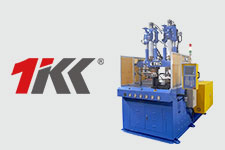Reflections Before Pursuing Automation

When wages are high and operators are hard to find, manufacturing owners naturally think about planning in the direction of reducing manpower and automating the process. However, in the process of pursuing automation, there are occasional cases of failure among TKC’s customers. Hereby, we sort out the factors and share the reflections of the owners of vertical injection machines before pursuing automation.
- Substitutes appear: The emergence of substitutes leads to the early end of the product life cycle. The embedding and removal of the vertical injection machine requires the coordination of various conditions, such as the reliability of the embedded part size falling within the tolerance range. The screening, alignment, orientation, positioning and transfer of embedded parts, etc., require careful planning for each item of inspection. The process is time-consuming and costly to replace manual import and automation, and any mistake in one step will lead to the failure of the whole case. When everything is ready to enter fully automated mass production, if there is a better substitute for this product, it will undoubtedly declare the success of automation, but the product life cycle ends. Especially with the ever-changing electronic parts, owners have to be cautious before pursuing automation.
- OEM production: Non-proprietary patented products, but cry without tears when encountering transfer orders. The cost of importing automation is bound to be reflected in the cost of the product. A large number of orders are required to achieve a balance between reduced wages and increased automation costs. The cost of importing automation is bound to be reflected in the cost of the product. A large number of orders are required to achieve a balance between reduced wages and increased automation costs. When orders are transferred to countries with cheaper wages for production, automation does not necessarily have an advantage when prices are reduced. Therefore, OEM production must ensure that the order is stable for a long time, so as not to invest in automation on high-risk orders.
- Single style products must reach production scale: The products are small and varied, and they are exhausted. Some of the orders of TKC’s customers seem to be large at first glance. In fact, a small number of various orders add up to look like a large number of orders. The small amount disassembled is not enough to meet the stand-alone automation, so the automated stand-alone machine should be suitable for various sizes and styles. But as mentioned earlier, the embedded parts of the vertical machine need to be shared in various sizes and styles from screening, orientation, positioning, and alignment. There are certain engineering bottlenecks. To achieve a small number of diverse stand-alone automation, it is bound to increase the automation cost or replace some components. However, after the introduction of automation, it is often found that the line change adjustment and calibration are time-consuming and are not competent for ordinary operators. At this time, you will realize that not all large-volume product introduction automation is a favorable decision.
Share the above cases encountered by TKC’s customers during the introduction of vertical molding automation, hoping to remember the lessons learned.
First of all, you must consider whether the product you want to import meets the following conditions :
- No substitutes in the short term.
- Is the source of orders stable for a long time.
- Whether a single-model product has reached mass production.
If the upper all condition are yes, we suggest you to contact with TKC terms to plans the automated production line for you and introduces Industry 4.0.
Source : PRM - Blog - TAIWAN KINKI - Reflections Before Pursuing Automation


